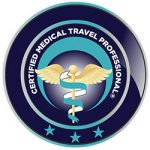The aim of Osteopathy is to improve the body’s overall healing system, here we look at what it is and how it can benefit your health and wellbeing.
Osteopathy is an alternative medicine practice that focuses on a person’s entire body. It is non-invasive and drug-free and falls within the umbrella of ‘alternative medicine’. It centres on the manipulation of the body’s bones, nerves and muscle tissues – in other words, it aims to care for the musculoskeletal system.
Origins of Osteopathy
Osteopathy was developed in 1874 in the United States by Andrew Taylor Still, a 19th-century physician, who felt that a person’s entire health was influenced by the health of their musculoskeletal system. To describe his theories, he created the name ‘osteopathy’ which is derived from two Greek words, ‘osteon’ meaning ‘bones’ and ‘pathos’ meaning ‘suffering’. Through manipulation of the musculoskeletal system, a key aim of osteopathy is to rehabilitate nerves to their pre-existing healthy condition.
Is Osteopathy Safe?
Osteopathy is considered very safe, although, like other treatments, there can be risks. In their training, osteopaths are trained to identify any conditions that are not suitable for osteopathic techniques and when referral to other health professionals is required.
A national organisation, Osteopathy Australia, previously known as the Australian Osteopathic Association, was established in 1955 to promote the interests of osteopaths in this country and oversee training, licensing, and compliance.
What Does an Osteopath Do?
Many physical and hands-on procedures such as palpation are used by osteopaths to help a person’s bodies heal. Before they do anything else, they’ll search for and remove any obstructions to your body’s healing and recovery. They will look for any symptoms of dehydration, congestion, stiffness, scarring, density, or lack of resilience in the muscles and tissues.
Based on their findings from their examination, the osteopath will construct a care plan. This will be based on which tissues or systems need the most urgent help and attention. Pressure, stretching, massage, mobilisation, and manipulation will all be employed to restore your normal range of motion and functioning.
Osteopathic therapies may include several techniques, such as:
- The treatment and manipulation of soft tissues
- Drainage of lymph fluids
- Release of myofascial adhesions
- Techniques involving muscle energy
- Osteopathic method of articulation
- Manipulating the viscera
Benefits of Osteopathy
For some diseases, osteopathy works better than medication or surgery, according to those who have tried it. Muscle discomfort is one of the most common uses, although it may also be used to treat a variety of health issues. Some are listed below.
- Lower back pain: Pain in the lower back is most commonly caused by a muscular strain from exercise or hard lifting, but it can also be caused by a pinched nerve.
- Neck pain: When the neck muscles are overworked as a result of improper posture, this results in neck discomfort. Osteoarthritis can also cause pain in the neck.
- Carpal tunnel syndrome: Carpal tunnel syndrome occurs when the median nerve in the palm and wrist is under excessive pressure. Tingling, numbness, and weakness are among the symptoms.
- Menstrual pain: During a woman’s menstrual cycle, the throbbing, cramping pain in the abdomen is known as menstrual pain. The term dysmenorrhea is also used to describe it. Some of the additional side effects include diarrhoea, stomach cramps, lower back discomfort, and headaches.
- Sinusitis: Sinusitis is a condition in which the tissues that line the sinuses become inflamed or swollen. The sinuses could become inflamed, causing them to become clogged and saturated with fluid. Colds and allergies are the most common causes of sinus issues.
- Migraines: Migraines are debilitating headaches that can last anywhere from a few hours to a couple of weeks or more. When you’re suffering from this, you’ll feel an excruciating throbbing ache, as well as nausea and light and sound sensitivity.
- Asthma: Asthma occurs when your airways enlarge and constrict, resulting in increased mucus production. This can impede breathing and result in shortness of breath, coughing, or a wheezing or whistling or sound while exhaling.
Osteopathy is also known to enhance sleep and has a beneficial influence on an individual’s general health. It has a positive effect on the cardiovascular, lymphatic, and neurological systems. In certain cases, it can result in significant benefits and eliminate the need for invasive surgery. Occasionally, it might be coupled with medications and surgery to provide optimum effects.
This article provides general information only, and does not constitute health or medical advice. If you have any concerns regarding your health, seek immediate medical attention.








